Volume 4, Issue 2
Displaying 1-14 of 14 articles from this issue
- |<
- <
- 1
- >
- >|
-
1984Volume 4Issue 2 Pages 91-92
Published: April 01, 1984
Released on J-STAGE: April 12, 2010
Download PDF (156K) -
1984Volume 4Issue 2 Pages 93-99
Published: April 01, 1984
Released on J-STAGE: April 12, 2010
Download PDF (1102K) -
1984Volume 4Issue 2 Pages 101-105
Published: April 01, 1984
Released on J-STAGE: April 12, 2010
Download PDF (574K) -
1983Volume 4Issue 2 Pages 106-110
Published: April 01, 1984
Released on J-STAGE: December 10, 2010
Download PDF (586K) -
1984Volume 4Issue 2 Pages 111-113
Published: April 01, 1984
Released on J-STAGE: April 12, 2010
Download PDF (306K) -
1984Volume 4Issue 2 Pages 114-117
Published: April 01, 1984
Released on J-STAGE: April 12, 2010
Download PDF (398K) -
1984Volume 4Issue 2 Pages 118-121
Published: April 01, 1984
Released on J-STAGE: April 12, 2010
Download PDF (525K) -
1984Volume 4Issue 2 Pages 123-130
Published: April 01, 1984
Released on J-STAGE: April 12, 2010
Download PDF (1128K) -
1984Volume 4Issue 2 Pages 131-149
Published: April 01, 1984
Released on J-STAGE: April 12, 2010
Download PDF (1864K) -
1984Volume 4Issue 2 Pages 151-166
Published: April 01, 1984
Released on J-STAGE: April 12, 2010
Download PDF (1730K) -
1984Volume 4Issue 2 Pages 169-174
Published: April 01, 1984
Released on J-STAGE: April 12, 2010
Download PDF (2500K) -
1984Volume 4Issue 2 Pages 175-179
Published: April 01, 1984
Released on J-STAGE: April 12, 2010
Download PDF (9236K) -
1984Volume 4Issue 2 Pages A1-A3
Published: April 01, 1984
Released on J-STAGE: April 12, 2010
Download PDF (4261K) -
1984Volume 4Issue 2 Pages A5-A7
Published: April 01, 1984
Released on J-STAGE: April 12, 2010
Download PDF (2825K)
- |<
- <
- 1
- >
- >|
